| From Kartchner Caverns we went a few miles down the road to the
historic town of Tombstone. This town's main claim to fame is the gunfight
at the OK Corral. Today it lives totally on tourism. |
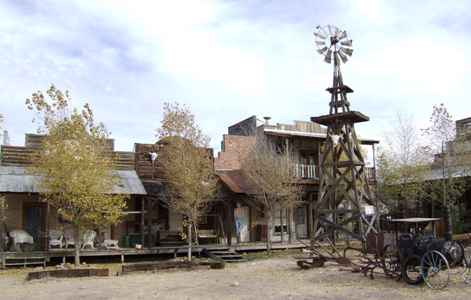 |
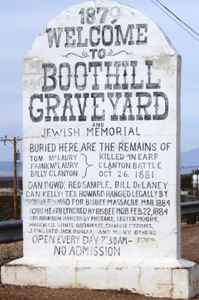 | It also has the
original famous 'Boot Hill' cemetery. Admission is free and you can't get
out. Most of the graves are mounds of stones with a modern wooden stake. The
graves are mainly between 1879 and 1885 and contain many which are unknown.
Of the selected graves below, the first was hung by mistake, the group in
the centre were those killed in the OK Corral shootout, and the last shows
how dangerous it was to play cards. |
| The view from the graveyard over the valley is quite special.
Most graveyards don't have it this good. |
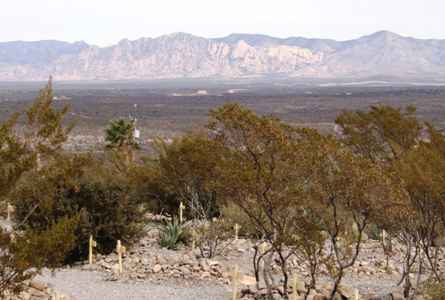 |
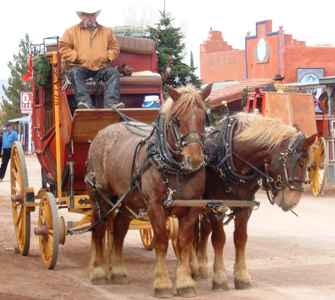 | Two blocks off the
through road, we found the town's main street. This is closed to traffic and occupied by
a bunch of gunslingers waiting for the next replay of their big moments. On
this day it
also had a couple of sedentary stagecoaches with drivers complaining they
hadn't put on enough thermals as it was a cold day. The shops are full of tourist trade goods
but and the tourists were conspicuous by their absence. |
| We travelled on down the road to Bisbee, a famous mining town now
also relying on tourism since the huge mines near the town closed down in the mid 70s. |
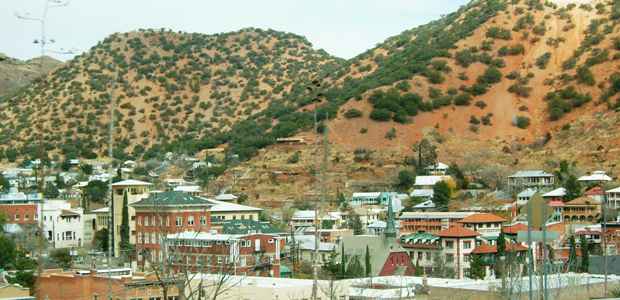 |
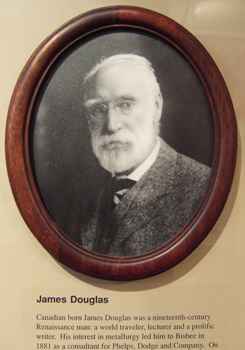 | A Scotsman by the
name of James Douglas is a key player in the development of the town. He
came as a consultant for one of the two mines and took on many other roles
in time, including being chairman of the company. (My father was also called
James Douglas...) There are several collections of rocks and crystals in
the museum which is in the old mine offices. I have some names for the
crystals but mostly I just admire the colours and shapes. The one on the far
right is native copper where the copper is so abundant, the native metal
just lies there in the sun.
It takes 150,000 tons of dirt to make enough copper to make a dime unless
you are in parts of Arizona where you only need 80lb. |
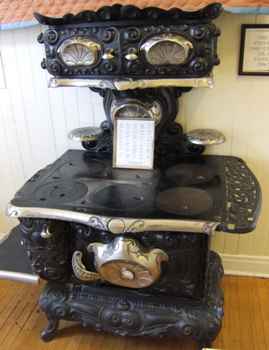 | As with many of
these museum there are other items of life in the early part of the
20th century. This museum has several ancient safes (millions of ounces of silver
were mined here) and this impressive looking range. Very ornate. |
| There are also several pieces of crystal which immediately
caught Jan's eye since she collects such items. |
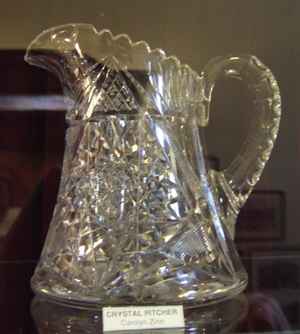 |
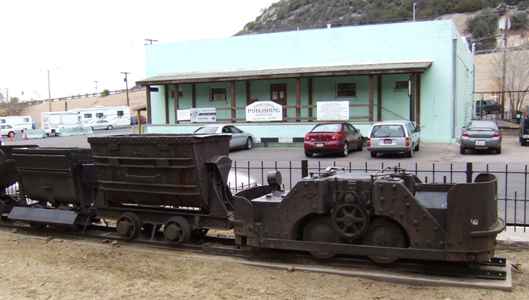 | Outside are a few
pieces of mine machinery from underground including this engine and hopper.
Today they use huge trucks carrying 360 tons at a time. |
| There are other period buildings in the town like this post
office. The town also used to have an electric tram and photos from the
1920s show that the town had a large population, most of whom were dependant
on mining. Many miners from other parts of the world such as Cornwall and
Serbia had items on display in the museum. |
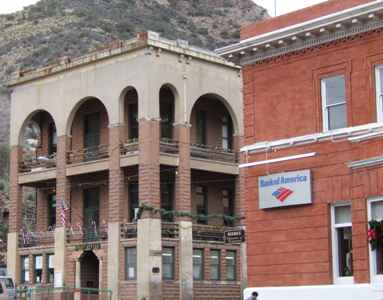 |
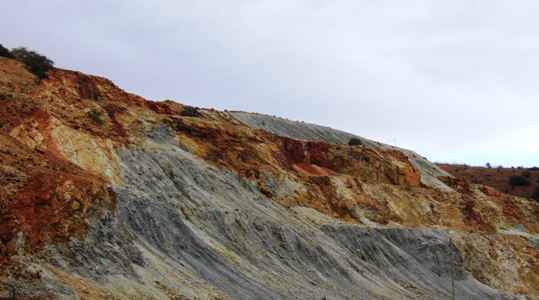 | As we drove out of
the town we immediately came to this huge hole in the ground which was where
one of the mines was. The company is still in mining but now works a pit
some three hours to the north. The cliff sides are very polychromatic. You
can just see the mine buildings on the edge of the crater. |
| Douglas, a few miles further south, is right on the Mexican
border and has one of the few official crossing points. Elsewhere the border
patrols are much in evidence despite the Rio Grande River, the fences and
the inhospitable terrain. The mountains in the background are in Mexico. The
town has a high steel fence right through the middle. It looks very
depressing. | 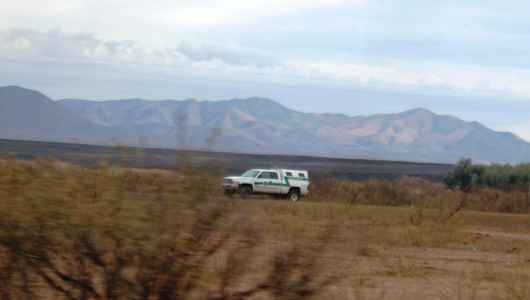 |
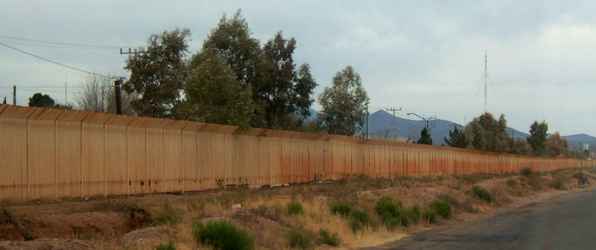 | The town is pretty
depressing, not the least because of the steel fence which separates it from
the even poorer Mexican town just across the border. |
| Driving north from
Douglas towards Portal we passed this memorial. It marks the area where
Apache chieftains Geronimo and Nachite finally surrendered to General Nelson
A Miles on Sept 6th 1886 having hidden out in Skeleton Canyon just to the
east. This ended the last Indian War. This was, and still is, a very
inhospitable area. | 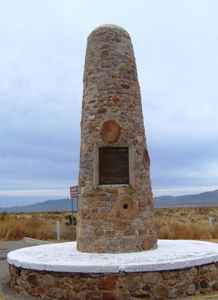 |
|